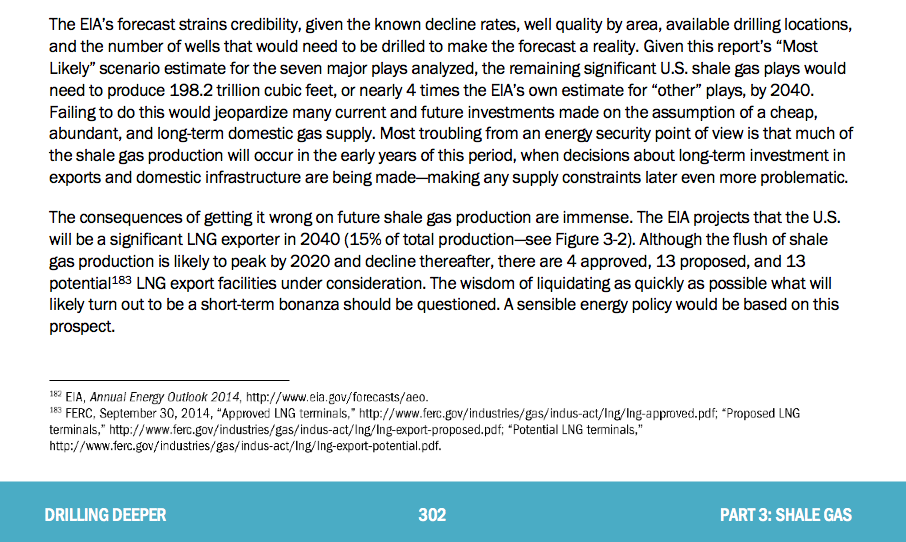Richard Ha writes:
Art Berman says we don’t have as much shale oil and gas as we think we do. He feels that the shale oil and gas sector is largely uneconomic.
The first time I heard Art Berman speak was on a panel discussion at a 2009 Association for the Study of Peak Oil conference. He studied four thousand Barnett shale wells in Texas and found that the average well gave up 72 percent of its production in the first year.
He definitely had a different perspective than an oil company executive panel member, who said that according to his hyperbolic curve calculations, the average well would produce for 22 years.
I knew someone was wrong. I thought that the oil company executive was just blowing smoke, to sell stocks. I imagined that by the end of the 22nd year, the amount of gas production from his gas well would fill a balloon an hour.
Many thousand of wells later, several credible studies from other sources, such as by this Post Carbon Institutes study by David Hughes, support Art Berman’s initial observations.
We need to pay attention to this because we rely on oil for seventy percent of our energy, and this makes Hawai‘i especially vulnerable. It’s much better to be safe than sorry.
The Big Island is lucky to have an alternative to oil and natural gas to make our base power electricity: Geothermal.
As time goes on, and as oil and natural gas prices rise, future generations will have a competitive advantage over the rest of the world. We will be over our geothermal “hot spot” for 500,000 to a million years.
It takes energy to do work. No energy, no work done. But it is the net energy left over from getting the energy that society uses to grow the economy. And since two-thirds of our economy is made up of consumer spending, it boils down to how much extra money the rubbah slippah folks have that will determine the health of our economy.
So Kumu Lehua was right. He asked me: “What about the rest?”
That is the key question. What about our kupuna on fixed income? The single moms? The working homeless? If they had extra money, they could spend it and everyone would benefit. Farmers are price takers, not price makers, and they would benefit. If the farmers made money, the farmers would farm.
Asking what about the rest will help us with food security. It all boils down to cost. That is to say, what are the combination of things that gives us the best net energy profile? This is more about common sense than rocket science. If we take our time to look for two solutions for every problem and one more just in case, we will find the solutions that make us competitive with the rest of the world.
This, in the final analysis, is about survival and adaptation. And it is about all of us; not just a few of us.

